Nourish & Plenty: The Seasonal Bounty
By Andrea E. McHugh
Nicole Craft is a local personal chef with a penchant for vegetables
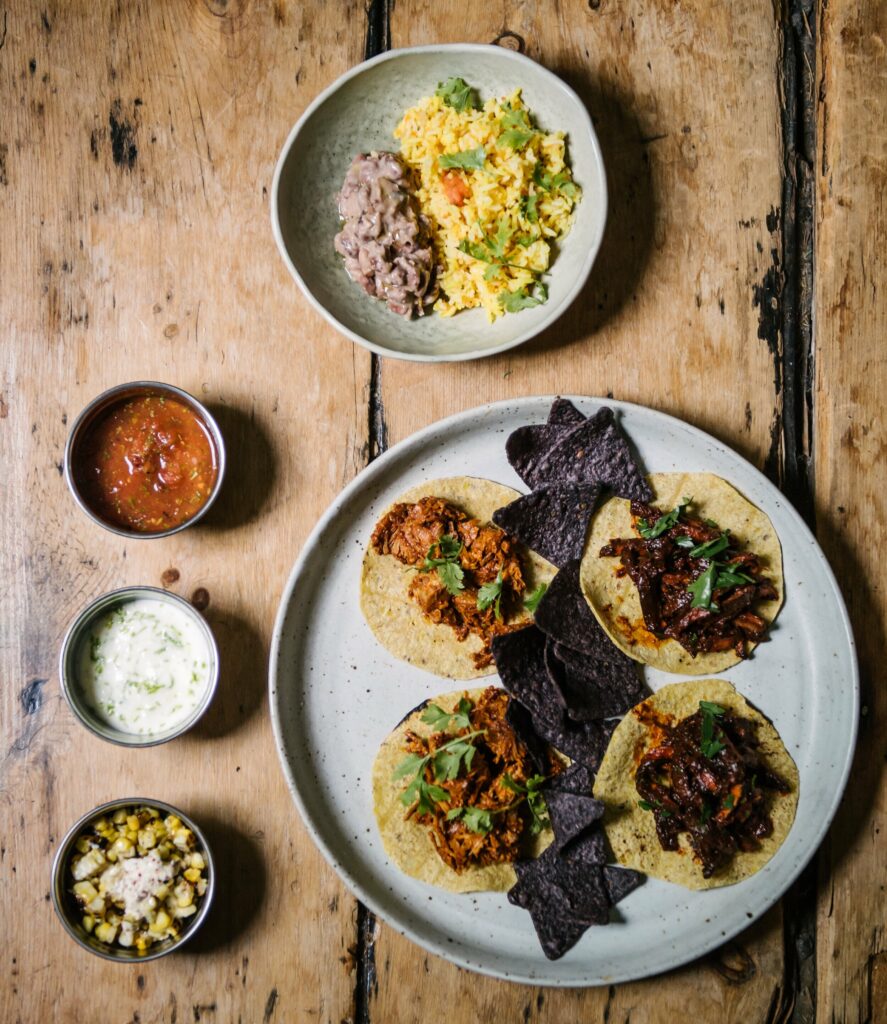
It’s not hard to wax poetic about New England farms’ robust summer bounty and fall harvest vegetables — leafy bok choi, plump cucumbers, glossy purple eggplants, sweet corn, juicy tomatoes — the list is lengthy.
Winter’s yield, however, is seemingly less dazzling — unless you ask Nicole Craft. The seasoned chef lights up like a star struck teen when talking about vegetables, even this time of year.
“I. Love. Vegetables. I love them,” she says with unwavering conviction. And she’s convinced that more people might too, if they keep an open mind and let their palate entertain new possibilities. And there’s nothing she likes more than proving it.
“I want to show you. If you don’t like beets, I want to give you beets that will change your mind…. Turnips that you may not typically use? Sometimes people don’t really know how to eat them [but] I think they’re really awesome to cook with. Braising a turnip in, say, beef fat? That is amazing.”
No stranger to the high-energy, chaotic pace of a heralded kitchen, Craft worked in some of New York’s iconic eateries, including The Spotted Pig, the now-closed West Village gastropub, and Roberta’s Pizza before being lured further north to the Hudson Valley.
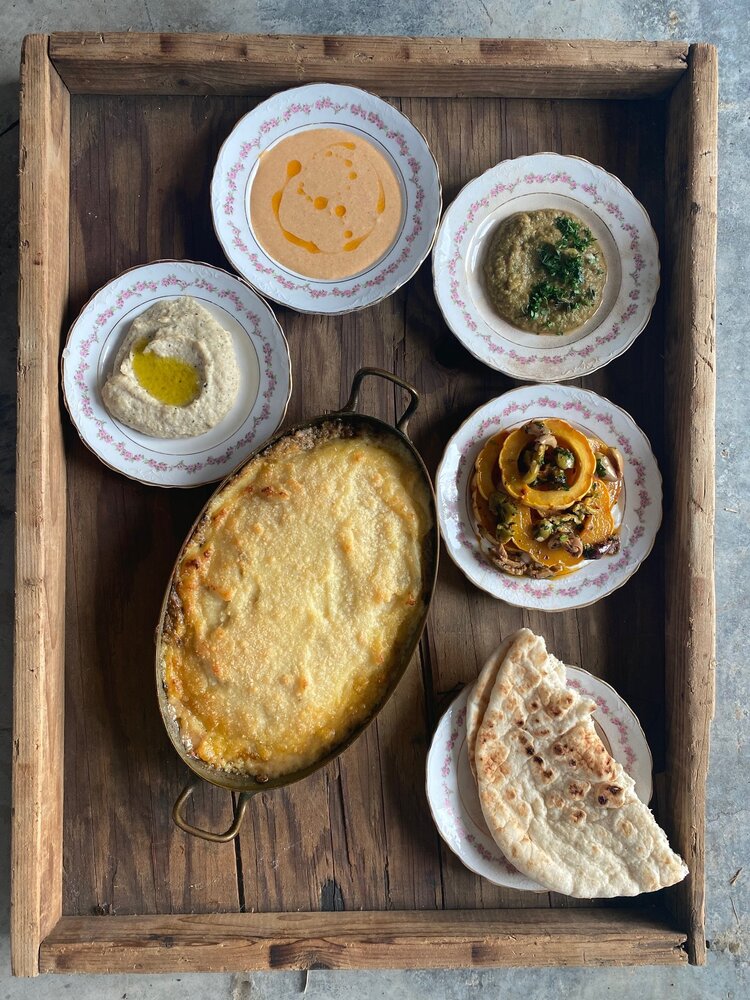
“I always had these dreams of working with farms and being really connected. When I was there, like 90 percent of my meats and everything was coming from farms.”
Finally, instead of just embracing a farm-to-table ideology, she was living it. Trading wanton urbanity for the bucolic region paid off in spades, both in and out of the kitchen, which also allowed her to raise her young daughter in a place known for its unspoiled natural surroundings.
Craft brought that same connectedness to the Ocean State, and with a desire to create curated culinary experiences, launched Snackcraft, now Craft & Willow, which offers bespoke catering for both daily meal delivery and events and gatherings.
The cornerstone of her approach is creating seasonally driven, vegetable-forward menus that may also push your palate’s boundaries — but don’t mistake that mission with a vegetarian agenda. While vegetables light her fire and serve as a source of endless curiosity and inspiration in the kitchen, Craft is an unapologetic carnivore.
“Yes, I love meat, steak and all those things,” she says.
That’s why, when she catered a multi-course dinner a few months ago for supporters of the Jamestown Arts Center, she was hardly intimidated by a guest list that included both vegans and meat lovers. “So, we had brisket, we also had fish, and then we had all these vegetables and just an array of things — not focusing on only one thing,” she says.
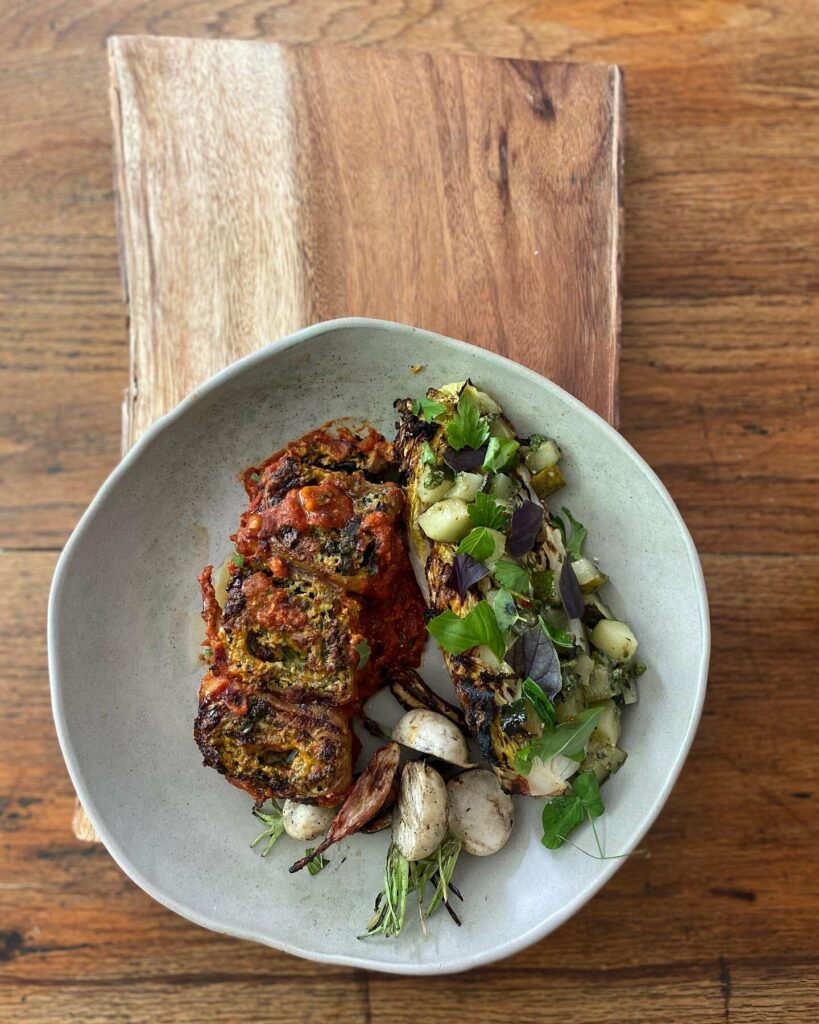
Craft works out of a commercial kitchen in Middletown. Although she has relationships with local farms, she often works with Farm Fresh RI, so she can order from a plethora of local farms in large quantities. For the past 20 years, the Providence based organization has been a hub of local food, connecting farmers, foragers, fishermen and food producers with buyers including chefs, restaurants, schools, individuals, and more.
Its Market Mobile program allows chefs, such as Craft, order what they need directly from the source.
“I only want to work with vegetables that are happening right now. I’m not going to really use tomatoes unless I preserve those tomatoes fresh in the summer,” she says. Craft is always looking for flavors that might be considered a little out of the ordinary.
This past summer, she ordered a ton of Jimmy Nardellos — sweet red peppers coveted for their rippled skin and sweet, fruity flavor — and canned them to use this time of year. Snap peas are another veggie she’ll preserve at peak freshness. “You can get snap peas all year round, but whenever they’re fresh and they’re coming out of the ground in the garden, I’ll take them and pickle them,” says Craft.
But she hardly pines for the warmest season. “I love winter. There are beets and squashes and greens — really hardy chard and kale,” she says.
Craft is experimenting right now with an indoor aquaponics farm at her home. It’s small, she says, but the sustainable farming method, which combines aquaculture and hydroponics (growing plants without soil) allows her to grow a variety of fresh herbs like parsley, small leafy greens including baby sorrel, edible flowers, including marigolds and nasturtium, and peas, which Craft calls “her favorite thing.”
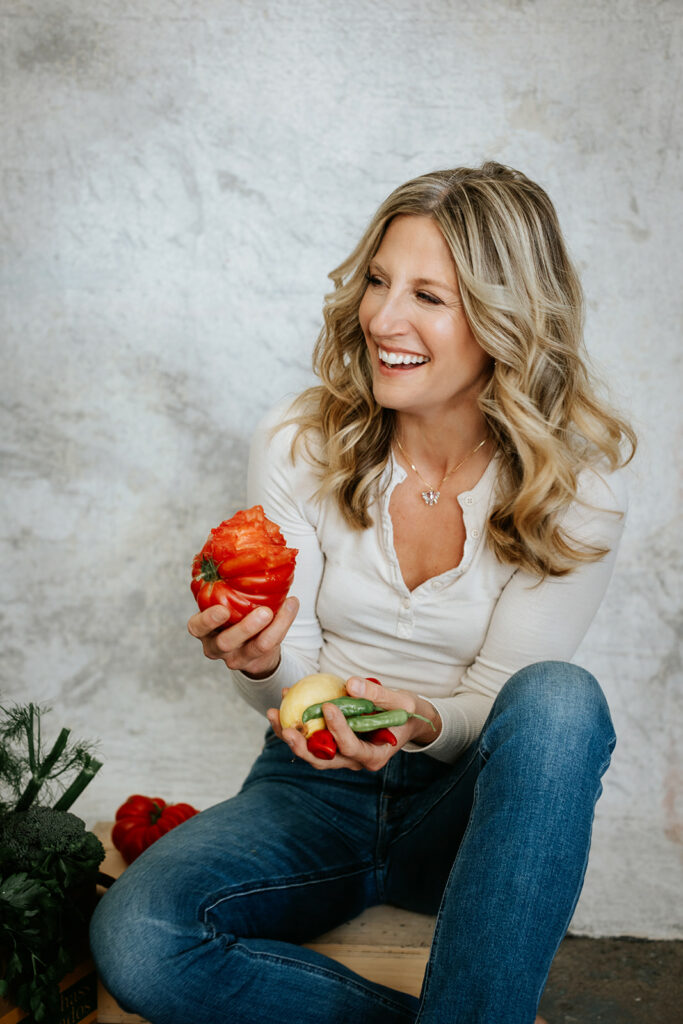
Endlessly curious, she often sources seeds from Row 7, an organic seed company built by chefs, farmers and plant breeders. Craft is currently growing Beauregarde snow peas from seed in the aquaponics farm. The peas grow in unusually vibrant, wavy purple pods — which keep their deep hue even when cooked
— although the peas inside are bright green.
The alternative growing method had yielded results that even she didn’t see coming.
“I have an outdoor garden, and I planted parsley and nasturtium in both places, and I gave my friend a taste test and it was, like, mind-blowing how different it was. You could taste how peppery the nasturtium was, it was really forward and delicate, and the [nasturtium] from the outside was less strong and more fibrous.”
Collards, radishes, red cabbage, radicchio and other chicories, Swiss chard, parsnips and rutabaga, beets, Brussels sprouts, leeks, cauliflower, multiple varieties of squash, carrots, mustard greens, and endive are just some of the vegetables that thrive in the wintertime. Soups, stews and slow-cooked meals are often winter vegetable go-tos. Other options include integrating them in winter salads, stir-frys, frittatas, dips, snacks — and as standalone sautéed side dishes.
Craft also knows what it’s like to sometimes dread cooking night after night, especially as a parent. That feeling was part of the inspiration for Snackcraft’s weekly meal service.
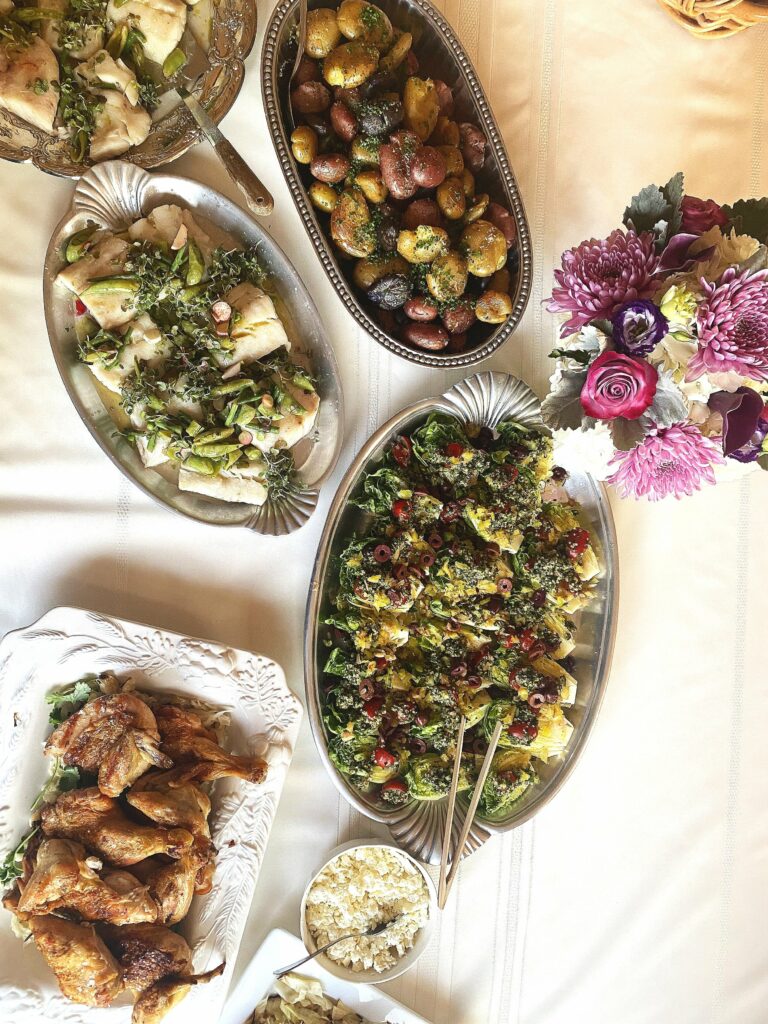
“I want to be able to give people a fun dinner,” she says.
She starts by finding out more about a client’s preferences and any allergies or dietary restrictions. Craft then crafts seasonal menus around familiar flavors — and maybe some new ones. Clients then receive the customized, wholesome meals delivered right to their door.
Admittedly, some first come to Craft requesting “meat and potatoes” dishes, and she obliges, but like a chef ’s tasting menu, an open mind can lead to the discovery of new favorites, reimagined classics, and extraordinary flavors from far and wide — especially as Craft formulates her own spice blends and sauces.
In fact, Craft has created her own line of sauces — to inspire home chefs to re-create some of Craft’s dishes on their own.
Says Craft, “Just incorporating foods and introducing you to new things, that way is what I like to do.”
For inspiration, Craft has shared a recipe for Roasted Winter Vegetables with Spiced Lentils and Yogurt Sauce:
RECIPE: ROASTED VEGETABLES WITH SPICED LENTILS AND YOUGURT SAUCE
INGREDIENTS
- Carrots, sweet potatoes, turnips, leeks, squash, winter greens, broccoli, cauliflower — any market vegetables suitable for roasting will work
- Salt
- Olive oil
- Lentils
- Yogurt
- Garlic
- Lemon
- Thyme
- Onions
INSTRUCTIONS
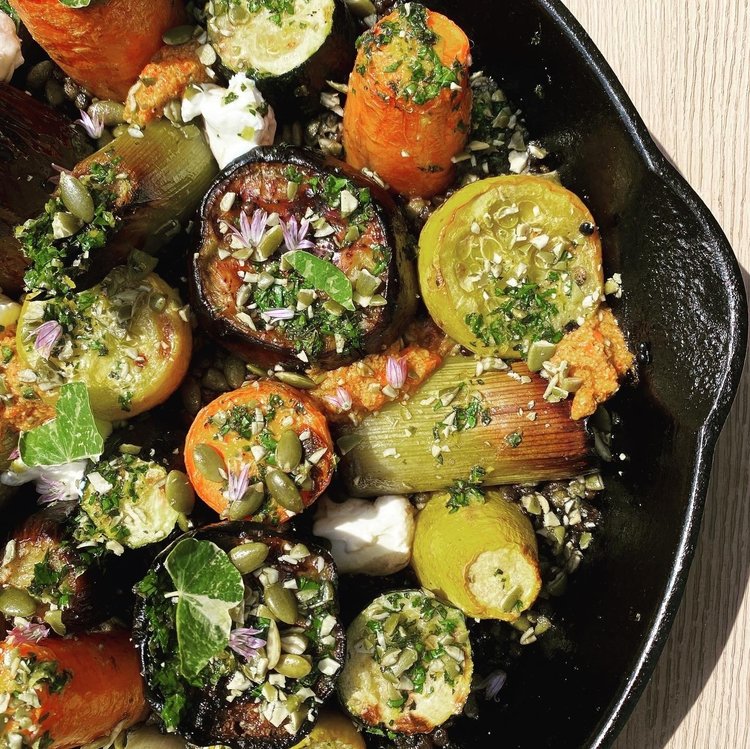
- Preheat your oven to 350°F (175°C).
- Begin by washing and peeling any vegetables that require it, then cut them into uniform 2-inch pieces.
- In a large mixing bowl, toss the prepared vegetables with olive oil and a pinch of salt. High-quality olive oil, like Lorenzo from Bottega, and salt from Newport Sea Salt work well for this.
- In a large skillet, such as a Lodge cast-iron skillet, add the lentils to cover the bottom. Beluga lentils, known for their black color and nutty flavor, are a great choice. Add water until it reaches the first crease of your finger when you touch the lentils. Season the water with a generous pinch of salt. Crush a garlic clove and roughly chop it, then add it to the skillet along with a sprig or two of thyme.
- Arrange the oiled and salted vegetables in the skillet, standing them up to fill the pan as much as possible. The vegetables will also help season the cooking liquid.
- Bake in the preheated oven for 45-55 minutes. To check for doneness, perform the “press test.” The water should have evaporated, and the lentils should be cooked.
- While the vegetables are roasting, prepare the yogurt sauce. If you’re at the store, Cabot yogurt is a great option for its thickness, but local yogurt is also fantastic. If you prefer thicker yogurt, strain it by placing it in a paper towel-lined colander. To the yogurt, add finely chopped garlic, salt, and a squeeze of lemon juice.
- Once everything is cooked and ready, add dollops of the yogurt sauce to the roasted vegetables. Sprinkle with a bit more salt and a squeeze of fresh lemon juice. Finish it off with a drizzle of olive oil.
- Voilà! You now have a stunning centerpiece of beautifully roasted vegetables. Feel free to substitute cooked beans or rice if you prefer.
- Enjoy!


